25 Gay Films Everyone Should See: Part 3D
Third installment in Metro Weekly's popular look at gay, lesbian, bi and transgender films that moved cinema to new heights

Okay. I know you’re thinking, ”Why 3D? What gay films are in 3D? Are there even 25 gay films that were made in 3D?”
Well, apart from the XXX-rated 3D film Reel Affirmations showed one year at midnight as a stunt, back when the festival was held at the Embassy Cinema on Florida Avenue (a moment of silence, please), I honestly can’t think of any. Still, most 3D televisions can now create a faux 3D experience. So, there’s that.
Anyway, the dearth of 3D LGBT films didn’t stop me from using it on the third installment in our popular ongoing series. I think I may have been watching Friday the 13th, Part 3D at the time….
But let’s look at 3D from a non-literal standpoint. This third list branches even further into the LGBT film canon than the first two installments, and in that sense, it achieves even greater depth. Yes, the first two times out, we had to hit the obvious notes — Brokeback Mountain, La Cage, Bound, Priscilla — but once you start to reach deeper into our cinematic heritage, new takes on timeworn themes start to emerge. Some of these films you’ve heard of, but possibly have never seen. Some you’ve never heard of, period. Some you might not even have been considered gay, yet they hold a unique place both in our history and in the motion picture terrain that defines them as such. (And bless the existence of Netflix, on which most of these films can either be ordered via disc or streamed.)
As with any list that limits itself to 25 — or 27, if you really want to get picky, as two of our items are “double features” — we’re likely missing a title and you’ll feel outraged over its exclusion. Please, feel free to express that outrage — courteously — on our website and suggest some ideas for our next outing.
Interestingly, when you take all three lists together, you have before you a remarkable assortment of LGBT films of all manner and stripe and genre. If you were to sit through each and every one, you would have not a just a sense of our history and culture, but our place in the cinematic landscape.
So without any further ado, here are some gay films. Enjoy.
Read more:
25 Gay Films Everyone Should See: The Original
25 Gay Films Everyone Should See: The Sequel
13 Camp Films Everyone Should See
20 Gay Shorts Everyone Should See
15 Black LGBTQ Films Everyone Should See
ANOTHER COUNTRY (1984)
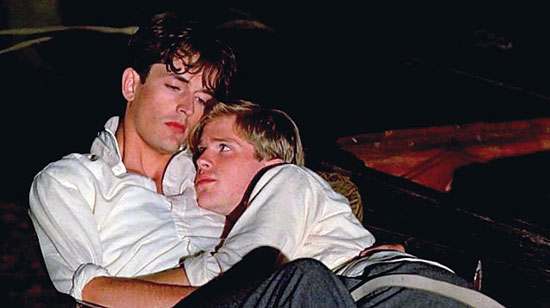
Another Country
Director Marek Kanievska’s stylish 1984 adaptation of Julian Mitchell’s play Another Country was the movie that introduced the world to Rupert Everett – not to mention Cary Elwes and recent Oscar winner Colin Firth. The gay Everett has said he thinks his own coming out in 1989 diminished his career as an actor. Certainly, he got off on a great foot as a leading man in Another Country, playing the role of Guy Bennett. Bennett wants to become a leader at an elite school in 1930s England, but those dreams are dashed when his clandestine affair with another man (Elwes) comes to light. The gorgeously shot, superbly acted E.M. Forster-style drama, based on a true story, is fundamentally a critique of the British class system and an exploration of the conflict between tradition and modernity. But it’s the tender gay love story at its heart that many remember best. This was, after all, a rather rare, positive portrayal of gay people at a time when ”AIDS panic” was fueling widespread homophobia. Yet here was Everett and Elwes, two impossibly pretty, preppy – normal – boys in love. –Doug Rule
AS GOOD AS IT GETS (1997)

As Good As It Gets
If you needed any proof that Greg Kinnear could act, look no further than this magnificent human dramedy from James L. Brooks, the man who brought Mary Tyler Moore and The Simpsons to our (once small) TV screens. Kinnear plays Simon, a gay artist whose brutal, near-death bashing brings him unwittingly into the path of Melvin (Jack Nicholson), an OCD misanthrope with extra bile for homosexuals, and Carol (Helen Hunt), a waitress who’s an imperative part of Melvin’s compulsive daily routine. The three go off on a road trip that draws them deeply and meaningfully into one another’s lives. As Good As It Gets tells the story of Melvin and Carol’s unlikely romance, but Simon is the catalyst. Kinnear’s performance is notable for its down-to-earth sturdiness — any flamboyance is saved for his agent, played by Cuba Gooding Jr. in fey overdrive. Kinnear brings a vulnerability to Simon that is at once heartbreaking and sweetly affirming. It’s a lovely, everyday portrayal of a gay man. Hunt and Nicholson both won Oscars for their extraordinary performances. Kinnear was nominated, but took home no trophies. He should have. Boy, he should have. –Randy Shulman
THE BROKEN HEARTS CLUB (2000)

The Broken Hearts Club
Thirty years after the groundbreaking but bitter gay film The Boys in the Band, Greg Berlanti’s directorial debut The Broken Hearts Club was christened ”The Boys in the Bland” by the Village Voice. And yet, the gay romantic comedy’s very ordinariness is part of what made it stand out and become a hit among gay audiences, who at that time were tiring of shopworn AIDS-related tragedies and coming-out tales. The film is also notable for a cast that includes a handful of moderately well-known Hollywood actors, including Dean Cain and Zach Braff, helping douse once and for all the long-dominant canard that playing gay would tarnish or pigeonhole a film career. Thirteen years later – and three years after television writer and producer Berlanti’s only other film, the formulaic and roundly panned Katherine Heigl-vehicle Life As We Know It, The Broken Hearts Club is still charming, even heartwarming, in its portrayal of a circle of gay friends in West Hollywood. It’s a case of Hollywood getting something right for a change: Just as it is with many real-life gay people, these friends act as a family, supporting each other through love, loss and softball. –DR
BUT I’M A CHEERLEADER (1999)

But I’m a Cheerleader
It’s not easy to walk the comedic line between reinforcing stereotypes and subverting them, but that deft navigation is what makes But I’m a Cheerleader one of the funnier gay comedies of the past few decades. Director Jamie Babbit’s satirical take on the ”ex-gay” movement is light-years ahead of the sophomoric Eating Out and Not Another Gay Movie, carving out its own niche rather than aping the hetero formula of American Pie. Not that Cheerleader lacks for silliness and camp. RuPaul stars out of drag as a counselor at ”True Directions,” where cheerleader Megan (Natasha Lyonne) is sent to correct her budding lesbianism. Cathy Moriarty chews the scenery — colored in gender-reinforcing garish pinks and blues — as the camp director. Despite a couple of heavy-handed moments, Cheerleader‘s raucous romp proves that one of the best ways to tear apart a movement that aims to ”change” us is one of the easiest — simply laughing at them. —Sean Bugg
Read more:
25 Gay Films Everyone Should See: The Original
25 Gay Films Everyone Should See: The Sequel
13 Camp Films Everyone Should See
20 Gay Shorts Everyone Should See
15 Black LGBTQ Films Everyone Should See
CABARET (1972)

Cabaret
As a young gay man, the English writer Christopher Isherwood spent much of the pre-war 1930s in Germany. His novel, Berlin Stories, a combination of two smaller pieces based on that experience was published in 1945. Jump a few years to 1969, and Judy Garland dies of an overdose in New York. Some say the untimely death of this gay favorite may have helped ignite the Stonewall Riots a week later. Then, in 1972, Garland’s daughter, Liza Minnelli, stars in the Oscar-winning screen adaptation of the 1966 Broadway musical Cabaret, based on Isherwood’s stories. At the time, anything gay was groundbreaking and controversial, yet here was a mainstream blockbuster — featuring a gay character (Michael York’s Brian) — able to hold its ground for its Kander and Ebb score and Bob Fosse direction and choreography alone. But it went further, maintaining one of Isherwood’s central observations that, try as one might, gay is gay, and you can’t easily put a gay peg in straight hole. From its nonfiction roots to its decades-later mainstream reception, Cabaret, when paired with its backstory of pushpins along a timeline of gay history, is a masterpiece bridging the gay zeitgeist of different eras. –Will O’Bryan
COME BACK TO THE FIVE AND DIME, JIMMY DEAN, JIMMY DEAN (1982)

Come Back to the Five and Dime Jimmy Dean, Jimmy Dean
Robert Altman was never known for making conventional films, and this screen adaptation of Ed Graczyk’s 1976 play was plenty unconventional in that it was an exact replica of the Broadway production, also helmed by Altman. The whole thing is a bit of a slow potboiler, with long-hidden secrets revealed as a James Dean fan club, known as The Disciples, reunites in 1975 on the 20th anniversary of the actor’s death. The story is related in both the present and a 1950s flashback, and it has a deliberately stagey feel. So, what makes it gay? To tell would spoil one of the film’s greatest surprises — and trust us, it’s a surprise you don’t want spoiled. Suffice to say, Jimmy Dean deals with themes that, at the time, weren’t all that frequently dealt with in such a forthright manner. The film also features Cher, whose acting was a revelation on its own. (She later proved it was no fluke, giving incredible performances in Mask and Moonstruck.) Jimmy Dean also features Sandy Dennis, Kathy Bates and that priestess of high camp, Karen Black. Gay enough for you? Thought so. –RS
DIE MOMMIE DIE! (2003)

Die Mommie Die
Watching Die Mommie Die! can feel a bit like tripping on acid, especially for cineastes of the old Hollywood, high-camp style. Charles Busch’s dark farce, based on his off-Broadway play, lovingly sends up those mid-20th century movies in which ruthless, domineering women were the star attraction. (Think over-the-top caricatures of Joan Crawford and Bette Davis). Directed by Mark Rucker, Die Mommie Die! is peppered with references to and tropes from such camp classics, but adds its own modern twist on the genre: Busch plays the lead role, Angela Arden, a washed-up Hollywood actress, and in the words of the daughter who hates her, ”a money-grubbing selfish bitch … and a promiscuous slut.” Did you catch that? Here we have a real-life gay man channeling, in drag, some of our earliest gay divas, larger-than-life Hollywood screen legends who were essentially drag queens themselves. Naturally, the plot is unbelievably far-fetched, featuring murder, a revelatory – and truly far-out – acid trip, even an undercover FBI agent played by Beverly Hills, 90210‘s Jason Priestley. Priestley’s character doubles as a well-endowed gigolo who seduces Arden, her daughter and her gay son, all as part of his investigation. Is this a good gay trip or what? –DR
DOG DAY AFTERNOON (1975)
SET IT OFF (1996)


An odd double feature? Sure. But, pairing the (unforgettable) Dog Day Afternoon with the (mostly forgotten) Set It Off accentuates the tragic gay-and-lesbian sentiments that run throughout both films, even if they aren’t necessarily intended to stand out. In the former, Al Pacino plays Sonny Wortzik, an amateur crook who robs a bank to pay for his partner’s sex-change surgery. In the latter, Queen Latifah plays Cleo, a hard-nosed lesbian who convinces three friends to rob a bank. Although Sonny and Cleo couldn’t be more different, these characters drew difficult, multifaceted performances from Pacino and Latifah that add an incredible degree of emotional heft to each film. Both films are marked by a boldness. Pacino’s performance in the mid-’70s and Latifah’s in the mid-’90s stand against difficult periods of LGBT violence — especially in cities — subtly challenging social prejudices without lionizing themselves. All of this is to say: There’s a lot more to Dog Day Afternoon and Set It Off than bank robberies and tragic endings. –Chris Heller
FAR FROM HEAVEN (2002)

Far From Heaven
It’d be easy to deem Far From Heaven, Todd Haynes’s Oscar-nominated drama, as simply a clever pastiche of the infamous 1950’s housewife genre — which characterized itself in tales of bored wives, social angst and tempestuous love. Indeed, Haynes borrows heavily from the Douglas Sirk films of that era, with lush colors, period direction, lavish costuming and deliberately clunky dialogue, but he uses the genre and its penchant for examining the lives of the traditional white, middle-class family, and injects a postmodern emphasis on racial tension and sexuality — topics explicitly disallowed in Sirk’s time. Julianne Moore, in a stunning performance, is Cathy Whitaker, the housewife in question, whose seemingly perfect life is shattered when her husband Frank (Dennis Quaid) reveals his repressed homosexuality. What follows is a close examination of the reaction typical of the time – therapy, secrecy, an emphasis on maintaining the veneer of perfection – and the inevitable destruction it wreaks on their family. Brilliantly acted, Far From Heaven is a beautifully crafted modern take on the effects of sexuality on the nuclear family. –Rhuaridh Marr
GODS AND MONSTERS (1998)

Gods and Monsters
Bill Condon’s breakout film is a pleasant biographical work, for sure, but it truly shines as a thoughtful meditation about the corrosive power of desire — the Hollywood sort, in particular. Ian McKellen plays James Whale, the troubled film director who made Frankenstein and Bride of Frankenstein, as his life and health slip away with old age. Whale’s romantic life becomes the subject of conflict and flashbacks, and he indulges memories of former flings and taunts his young gardener (Brendan Frasier) with the lurid details of his love life. McKellen’s performance alone is reason enough to watch Gods and Monsters, if only to watch in awe of the dizzying, unusual array of emotions that play across his face. In a long, magnificent career, this is McKellen at his best — he does splendid, clever work in this odd little film. His talent, coupled with the film’s haunting message, makes Gods and Monsters a gay classic. –CH
HOW TO SURVIVE A PLAGUE (2012)

How to Survive a Plague
A tremendously important film, the Oscar-nominated How to Survive a Plague is the story of how AIDS victims were treated is so outrageous and upsetting, it’s nearly unbelievable to consider today — but it happened. Our society’s demons need to be remembered. Enter David France — an investigative reporter who has spent decades covering gay-rights issues — with this astonishing, meticulous documentary. How to Survive a Plague carefully charts the early years of the AIDS Coalition to Unleash Power, better known as ACT UP, an aggressive gay-rights advocacy group that spontaneously came together at the nadir of the AIDS crisis in 1987. France combed through hundreds of hours of footage to recreate the desperate air of the times, lending credence to the righteous outrage that fueled ACT UP through the group’s early, controversial years in New York City. It’s an inspiring method of storytelling that keeps attention toward the filmmakers — the original ones who filmed on camcorders during ACT UP’s rallies and demonstrations. If you care about gay rights, civil disobedience or social activism — and, really, who doesn’t? — you need to see How to Survive a Plague. It’s a history lesson that boils with indignation. –CH
THE HUNGER (1983)

The Hunger
The ’80s may have been the decade when AIDS became part of the American landscape, but it was also the decade when being bi became a trendy social stance, at least along the Los Angeles/New York City axis. But when it came to seeing that trend on the big screen, L.A. got the short end of the stick with the neutered Less Than Zero, whereas Manhattan got the hottest lesbian sex scene on either side of the Mississippi when Susan Sarandon went sapphic with French sex goddess Catherine Deneuve in The Hunger. Years before vampire chic invaded every last corner of the culture, director Tony Scott had already laid the cinematic groundwork that seeps through to this day: dark and moody lighting, goth rock from Bauhaus, sunglasses at night and a heavy touch with the mascara. It was sold as ”sensual” and ”perverse” purely because there was lesbian sex. But it was hot lesbian sex, as hyper-eroticized and unrealistic as any straight sex scene on screen. Who cares if the ending doesn’t make much sense? By that point, Deneuve’s seductive presence had already satisfied a hunger audiences were just realizing they had. –SB
JEFFREY (1995)
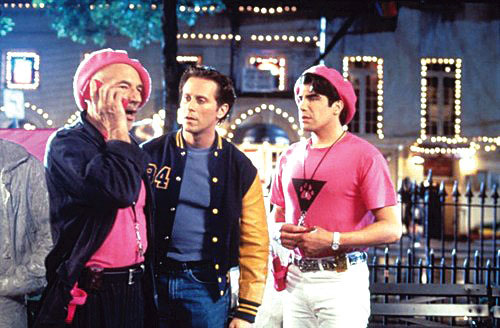
Jeffrey
The late ’80s and early ’90s were among the most dire years for gay men as AIDS tore away so many from the community’s fabric. For many, it seemed odd that gay men would want to laugh in the face of an epidemic, would desire to show the world the difference between the too-common AIDS ”joke” and the uncommon AIDS comedy. Enter playwright and screenwriter Paul Rudnick, whose stage play Jeffrey broke that barrier by taking a particularly acerbic and silly look at gay dating in the age of an epidemic. The film’s origin on the stage shows through, despite attempts to open it up. But Rudnick was happy to have fun playing meta, even making a joke at the expense of the audience he knew would be shocked by an on-screen man-to-man kiss. And he had a great cast to play with: Patrick Stewart prancing merrily out of his Star Trek captain’s chair; Steven Weber cashing in his then-current straight cachet to play the lovelorn title character; and a pre-Mad Men Bryan Batt as the wildly dim but always perky Cats dancer. Between Jeffrey and In and Out, Rudnick managed to show America that not every story about gay men had be about either death or wild sex. It was a much-needed cinematic service. –SB
THE KING AND THE CLOWN (2005)

The King and the Clown
While many still hear the phrase ”gay foreign film” and think European, those who pay close attention to the festival circuits know that over the past decade Asia has been the source of many excellent films. Too bad that too few people pay close attention to the festival circuit, because it means too few people have seen the amazing Korean historical drama The King and the Clown. Set in 17th century Korea, it follows two traveling performers — brash, bold Jang-sang (Woo-seong Kam) and effeminate, beautiful Gong-gil (Jun-ki Lee) — who find themselves entangled in the royal court of the country’s most notoriously cruel king. At heart, the film is a love story between the two, turned into a tragedy when the king becomes dangerously enraptured with Gong-gil. Funny, violent and tear-jerking by turns, The King and the Clown became one of Korea’s highest-grossing films of all time and launched Lee into superstardom. And underneath all the costumes and pageantry, the film never loses its focus on two men who come to understand how deep their connection is, in this life and the next. –SB
THE MUDGE BOY (2003)

The Mudge Boy
Written and directed by Michael Burke, The Mudge Boy is a quiet, smoldering powerhouse about loss and sexual awakening. Following the death of his mother, Duncan Mudge (Emile Hirsch), a shy outcast in a small rural community, enters into a friendship with Perry, a virile, sexually feral young man. Through this unlikely relationship, both boys’ lives are forever altered. Hirsch, at the start of his career with this film, brings startling poignancy to Duncan, while the always-marvelous Richard Jenkins hits just the right understated notes as Duncan’s grieving, stern father. Burke’s movie is steeped in a Days of Heaven-reminiscent luminosity, courtesy of cinematographer Vanja Cernjul, and one shot in particular, set in a field aglow in sunlight, is so ravishing, it takes your breath away. You might grow impatient with The Mudge Boy‘s methodical, deliberate pace, but the payoff is worth it. The final moments leave you emotionally winded, and the film fully displays the acting chops of Hirsch, who went on to become one of the finest actors of his generation. –RS
PARIAH (2011)

Pariah
In the wrong hands, Pariah could have easily settled as the sum of its parts. Its premise — a poignant look at a black teenage lesbian’s life in Brooklyn — seems like the tidy sort of coming-of-age story that’s ubiquitous on the festival circuit. Under director Dee Rees’s careful eye, however, this 2011 film is anything but. Pariah is something rare and stirring, an emotionally affective story that beautifully explores the social standards and barriers within its own fractured culture. The film follows Alike (the splendid Adepero Oduye), a 17-year-old high school student who can’t seem to fit in with traditional butch or femme crowds, frets about losing her virginity, and struggles to define herself. And that, ultimately, is the brilliance of Pariah. It turns an LGBT-friendly film into a story about identity. Your experience may not be as harrowing as Alike’s, but you still recognize its fundamental importance. You can still feel it. –CH
PRAYERS FOR BOBBY (2009)

Prayers for Bobby
Based on the true-life story of Bobby Griffith, who committed suicide in 1983, Prayers for Bobby offers one of the most disturbing questions of any LGBT film – what can a mother do to cope with her son’s suicide when she is possibly to blame? This is the question viewers must ask of Mary Griffith (Sigourney Weaver) who, as a devout Christian, refuses to accept her son’s homosexuality. She does everything her religious conviction tells her to do to ”save” her son – and when it fails, and he tells her he wants to be gay, she rejects him. Following Bobby’s death, Mary tears herself apart as she struggles to deal with her son’s suicide, and the disbelief that he is destined for eternity in hell. Weaver turns in an incredible performance – the actress rises above the often evident constraints of the made-for-TV movie, and brings a level of compassion to a character it would be otherwise very easy to hate. She humanizes Griffith to the point where we see her not as a woman who rejected her son and contributed to his suicide, but instead a person who made a mistake based on religious conviction. It is this mistake that we watch Griffith atone for, and it is Weaver who makes that atonement such an emotionally draining, yet ultimately uplifting, experience. –RM
PRICK UP YOUR EARS (1987)

Prick Up Your Ears
Let’s name-drop, shall we? A screenplay by legendary English playwright Alan Bennett. Based on a book by John Lahr (son of Bert, The Cowardly Lion). A supporting cast that includes Vanessa Redgrave, Wallace Shawn and Julie Walters. And two stars at the center who were utterly sublime — Gary Oldman and Alfred Molina. In the coyly named Prick Up Your Ears, Oldman does an about-face from his starring debut a year earlier as Sid Vicious in Sid and Nancy, and shows the world his extraordinary acting prowess. His turn as playwright Joe Orton, the young British farce-master whose works still bring roars to this day, is a performance steeped in the giddy joys personal self-discovery, both of one’s talent and sexuality. But it’s Molina’s superb, bracing portrayal of Kenneth Halliwell, Orton’s deeply jealous partner, that transports the film to a disturbing, tragically resonant realm. The facts are well-known — Halliwell killed Orton in a fit of rage and then committed suicide. And the way in which Frears — and Oldman and Molina — get there is movie storytelling at its finest. Prick Up Your Ears deals, tangentially, with issues pertinent to 1960s England, in which homosexuality was still considered an aberration. But it’s less a political drama than the true story of a same-sex relationship gone terribly, terribly wrong, tragically robbing the theater world of one of its greatest up-and-coming talents. –RS
QUERELLE (1982)

Querelle
Looking for simple plot and sympathetic characters? Keep looking. If, on the other hand, you’re looking for a surreal fever-dream in the form of an avant-garde homoerotic tableau, Querelle, directed by Rainer Werner Fassbinder from a novel by Jean Genet, is the film for you. Maybe you’ve seen the poster of the Brad Davis leaning against a sort of stone turret in the unmistakable form of a phallus. You might think you’re diving into some stylish porn. Instead, you get a meandering tale that has the sublime Jeanne Moreau, as brothel owner Lysiane, deadpanning a little tune, ”Each man kills the thing he loves,” dada-da, dada-da. You also get leathermen and construction workers, but none who can hold a candle to the breathtaking Davis, decked out as a simultaneously tough and adorable Belgian sailor, wife-beater undershirt meets pom-pom-topped sailor’s beret. While Davis got the spotlight in Midnight Express, wherein he declines some friendly man-on-man action, his Querelle is not at all inclined to decline. The tragic fiction breaks the fourth wall with heartbreaking reality: By the time of its release, Fassbinder had died of an overdose. Three years later, Davis learned he was infected with HIV, opting for assisted suicide in 1991. –WOB
ROMEOS (2011)

Romeos
When it comes to movies centered on transgender protagonists, there are a number of extremely well-executed documentaries. The fiction, however, has a tendency to get a little carried away. Often we get a trans woman lurking in the shadows, hoping to spy the children she fathered; or the trans woman harboring from her new lover the dark secret of having been born a bio boy. But Romeos is a fresh take. Lukas (Rick Okon), a 20-year-old trans man transitioning from female to male and fulfilling his year of ”civilian service,” is demanding of nothing more than his basic human rights. Conflict here, in part, centers on the seemingly mundane, like why the heck can’t Lukas be housed in the boys’ dorm? Yeah, there’s sort of a love story, but it’s not nearly as interesting as Lukas’s relationship with his childhood gal pal, also in the dorms, who is quick to call Lukas out whenever he’s acting like a dick. No one dies. The tears are minimal. It’s refreshing simply to watch Lukas navigate his landscape with curiosity as he surpasses his unique challenges, uplifting to see him demand to be treated with equality and respect, even if his particular cross to bear might seem particularly heavy at times. –WOB
ROPE (1948)
SWOON (1992)

Rope
Swoon
When the great Alfred Hitchcock dealt with homosexuality, it was a tacit affair. Strangers on a Train (1951) notwithstanding, Rope is probably the closest he dove into the topic, even though it was akin to a wading pool. What gives Rope its gay frisson is the subject matter on which it’s based — a 1929 stage play that was, in turn, inspired by the notorious 1924 abduction and murder of 14-year-old Bobby Franks by University of Chicago students and lovers Nathan Leopold and Richard Loeb. Nothing in Rope implies that the protagonists — two bachelors who share an apartment — are in fact cavorting in a single bed, but the performances by John Dall and Farley Granger have uber-cultured personas that, at that time, would hint at such. James Stewart plays the professor who unravels the boys daring stunt of placing a body in the apartment during a dinner party. Rope is renowned for being shot in the illusion of a single take, a brave move that doesn’t really quite work, but makes for an interesting bit of cinematic eccentricity. The obvious companion piece is Tom Kalin’s Swoon, a blazing, stylish indie that deals far more explicitly with the gay relationship of the two young killers and is made all the more electrifying by Ellen Kuras’s startling, high-contrast black and white cinematography. Charged with malice and evil and, yes, even sorrow, Swoon is worlds apart from Rope‘s sedately cerebral yet sinister game of cat and mouse. –RS
Read more:
25 Gay Films Everyone Should See: The Original
25 Gay Films Everyone Should See: The Sequel
13 Camp Films Everyone Should See
20 Gay Shorts Everyone Should See
15 Black LGBTQ Films Everyone Should See
SAVE ME (2007)

Save Me
“I don’t change people — I show them how to get closer to Jesus Christ and let them make their own way,” insists Gayle (Judith Light), facilitator of Genesis House, a “Christian recovery program specializing in sexual brokenness.” What’s broken, in Gayle’s mind, are the gay young men who come through the ministry’s doors. Yearning to be straight, they buy into the ministry’s religious hyperbole without question. Or do they? The notion is explored in Save Me, a pain-stoked drama that eschews sensationalism for rich, deeply felt performances and a narrative path that is ultimately as affirming as it is troubling — while some may learn to love themselves for who they are, there is always one more gay man trying to “be straight.” The narrative focuses on Mark (Chad Allen, giving a performance of marked clarity), and the feelings he stirs in Scott (Robert Gant) — and the problems their clandestine, pining glances cause for those around them, and Gayle in particular. The film gains power from its unique setting — few gay films are set in a ”reparative therapy” ministry — as well as a compelling, gripping performance from Light. Her face a dichotomy of concern and intolerance, Light brings this vexing woman to bracing life. Save Me doesn’t judge the reparative-therapy movement harshly (though it certainly doesn’t condone it), but rather director Robert Cray and writer Robert Desiderio try to bring understanding to its purpose. One might even call it enlightening. –RS
SHELTER (2007)

Shelter
If you only watch one film on this list, let it be Shelter. No other film here can deliver a viewing experience so unassuming yet rewarding as this tale of growing up, coming out and experiencing first love on the sun-kissed beaches of California. Featuring beautiful cinematography, an appropriately angst-filled soundtrack, an attractive and talented cast and an effortlessly easy plot, it offers up the celluloid equivalent of an antidepressant. We follow Zach (Trevor Wright), an aspiring artist who lives with his sister in San Pedro, as he works a dead-end job and deals with life in a rut. Enter his best friend’s openly gay older brother Shaun (Brad Rowe), who returns home to Los Angeles and befriends Zach. Zach struggles with the feelings he develops for Shaun, attempting to conceal them from his family and girlfriend, and the impact his newfound emotions have on his life. The nervous, frustrated build-up to the pairing’s first sexual encounter is worth the price of admission alone. Shelter doesn’t have the deepest plot, or the most lyrical dialogue, nor will it blow you away with high production values or incredible set pieces. Instead, it strips away the layers that suffocate many LGBT films and offers a love story so elegantly simple it’s almost perfect. –RM
WERE THE WORLD MINE (2008)

Were the World Mine
Were Shakespeare alive today, it would be amusing to see his reaction to the wonderful Were the World Mine. Tom Gustafson’s film focuses on gay teen Timothy (Tanner Cohen) and his life at an all-boy’s school as they prepare to stage a production of the bard’s A Midsummer Night’s Dream. Featuring an excellent ensemble, the fantasy musical sees Timothy gaining the power to force the inhabitants of his town to experience life in his shoes. Anyone who comes into contact with his love-in-idleness flower immediately falls in love with the next person of the same sex they see. Timothy uses it to gain love, exact revenge and offer much-needed education to his classmates, teachers and neighbors – though not without the consequences of altering the way a person loves. It’s a nice riff on gay-to-straight conversion, and comes with similar emotional pitfalls. With a catchy, upbeat soundtrack, Were The World Mine offers a tale of gay empowerment in the face of homophobia, wrapped up in song, costume and enchantment. It’s whimsical, endearing, and ultimately feel-good – a stark and welcome contrast to many of the darker films on our list. –RM
THE WISE KIDS (2011)
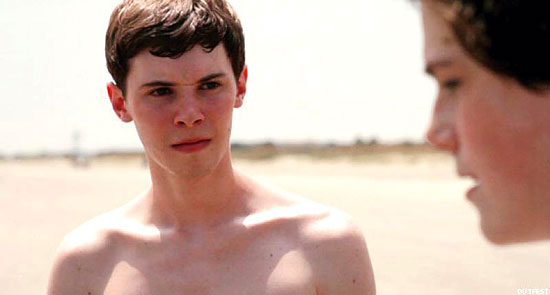
The Wise Kids
You don’t know who Stephen Cone is, do you? It’s a crime. His 2011 indie, The Wise Kids, is a coming-of-age sleeper showpiece. Cone, who wrote, directed and takes on the role of a closeted South Carolina pastor, captures the reality of three teens with immeasurable respect and heart. Whether it’s the pastor’s daughter (Molly Kunz) who is starting to question her faith, the boy (Tyler Ross) taking his first steps out of the closet, or the third of these three wise kids (Allison Torem) who insists that her God is an awesome God and that that’s just so awesome, Cone’s characters are stunningly genuine. And where the storyteller might be tempted to mock for comic relief, Cone refuses to pander. Instead of short cuts, Cone dives deeper still, giving supporting characters roles that allow each to steal some scene or another. The result is this quietly stunning film that everyone should see, a movie as simply satisfying as a glorious sunset, and equally as profound. –WOB
Read more:
25 Gay Films Everyone Should See: The Original
25 Gay Films Everyone Should See: The Sequel
13 Camp Films Everyone Should See
20 Gay Shorts Everyone Should See
15 Black LGBTQ Films Everyone Should See
Support Metro Weekly’s Journalism
These are challenging times for news organizations. And yet it’s crucial we stay active and provide vital resources and information to both our local readers and the world. So won’t you please take a moment and consider supporting Metro Weekly with a membership? For as little as $5 a month, you can help ensure Metro Weekly magazine and MetroWeekly.com remain free, viable resources as we provide the best, most diverse, culturally-resonant LGBTQ coverage in both the D.C. region and around the world. Memberships come with exclusive perks and discounts, your own personal digital delivery of each week’s magazine (and an archive), access to our Member's Lounge when it launches this fall, and exclusive members-only items like Metro Weekly Membership Mugs and Tote Bags! Check out all our membership levels here and please join us today!








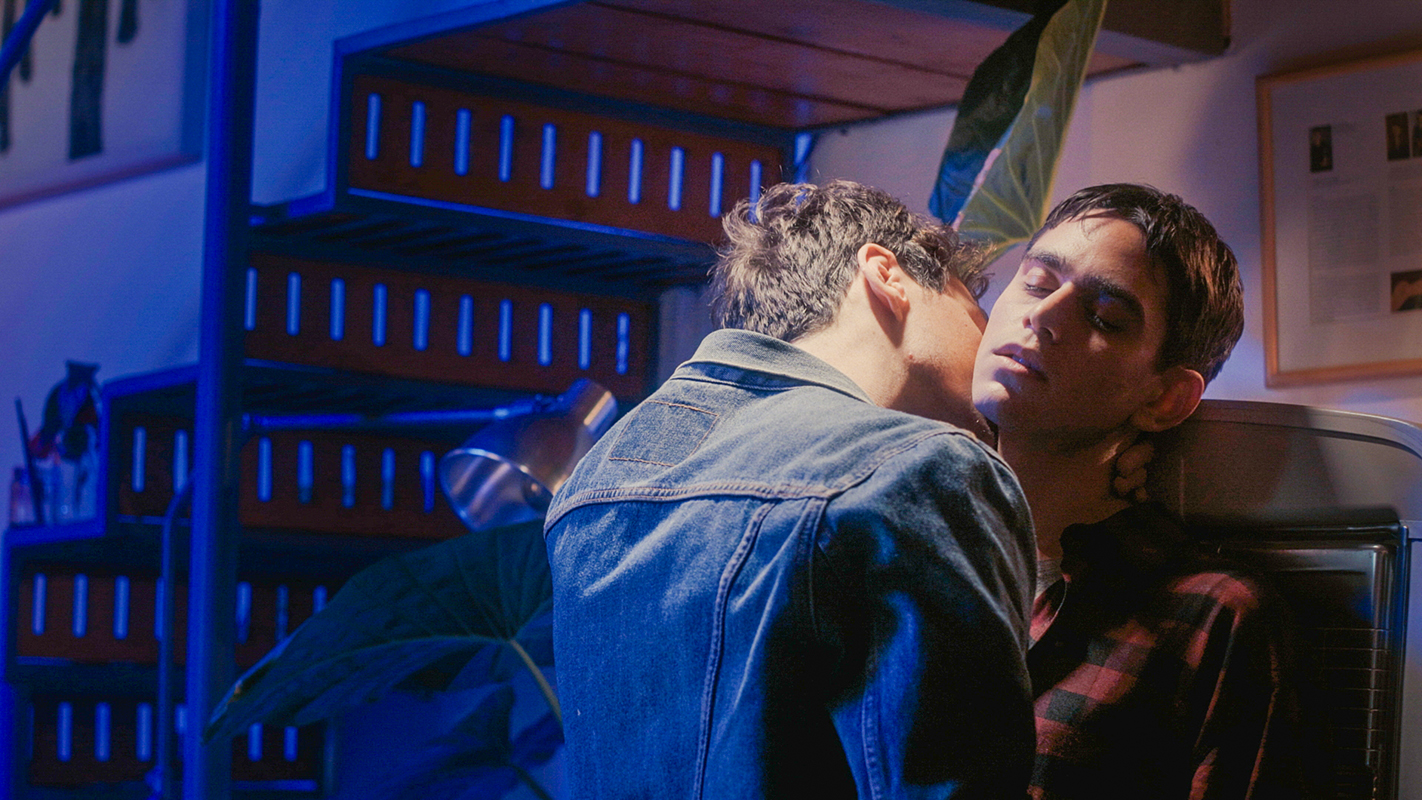
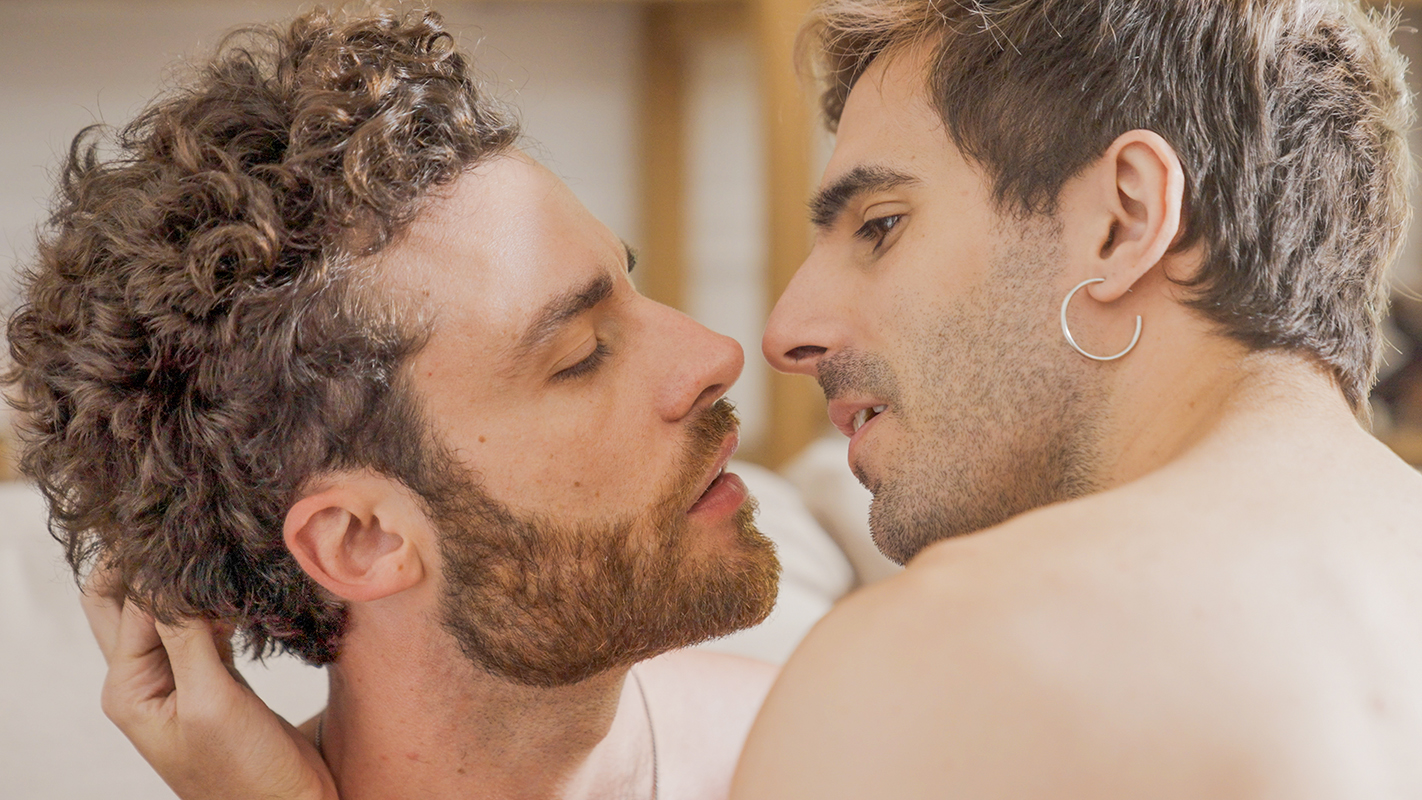














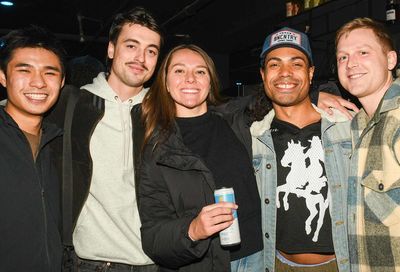
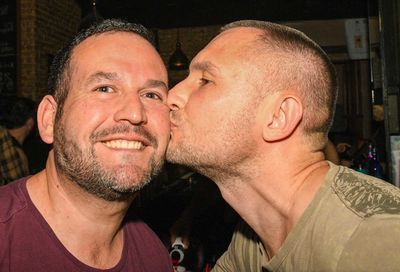
You must be logged in to post a comment.